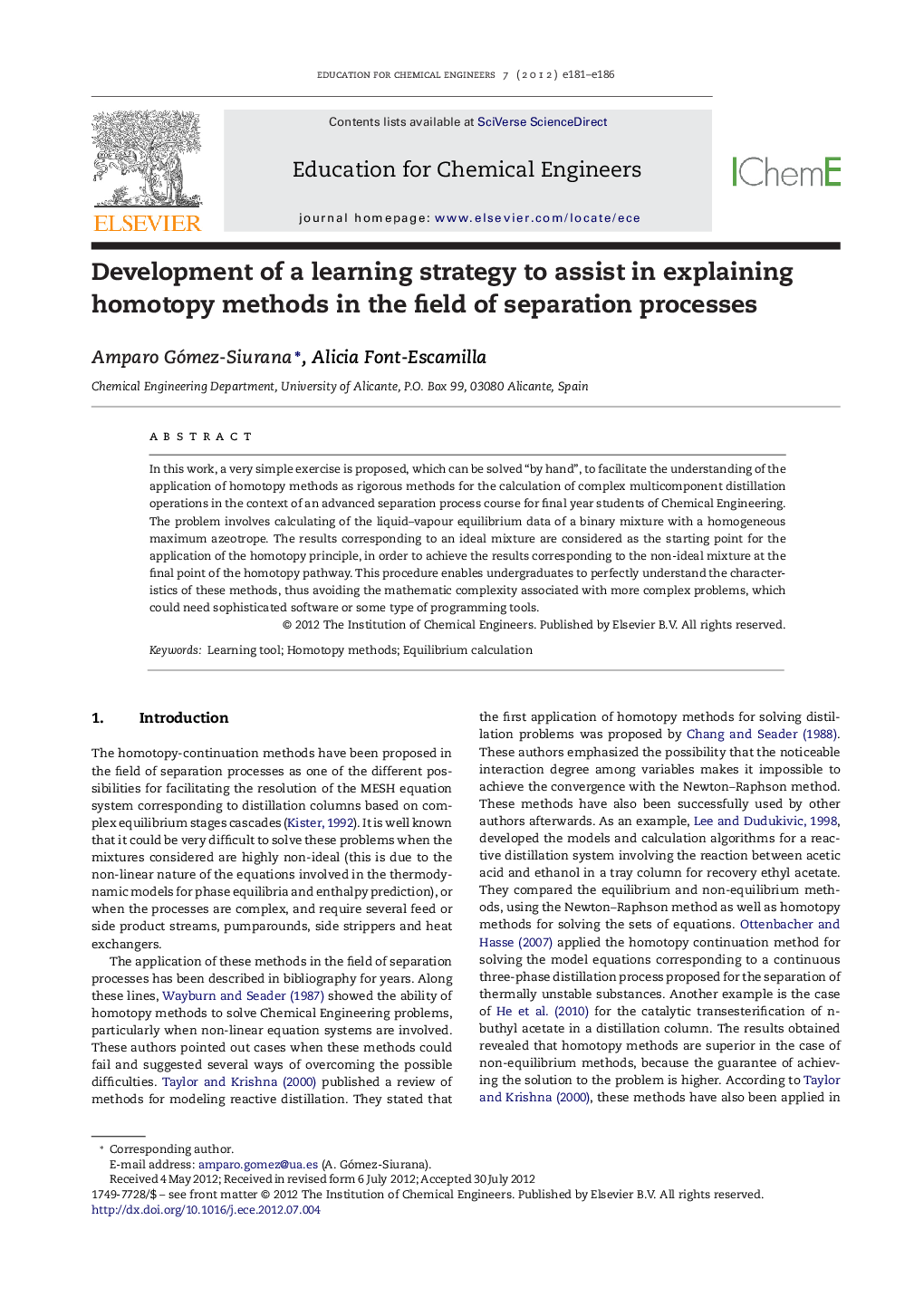| Article ID | Journal | Published Year | Pages | File Type |
|---|---|---|---|---|
| 178514 | Education for Chemical Engineers | 2012 | 6 Pages |
In this work, a very simple exercise is proposed, which can be solved “by hand”, to facilitate the understanding of the application of homotopy methods as rigorous methods for the calculation of complex multicomponent distillation operations in the context of an advanced separation process course for final year students of Chemical Engineering. The problem involves calculating of the liquid–vapour equilibrium data of a binary mixture with a homogeneous maximum azeotrope. The results corresponding to an ideal mixture are considered as the starting point for the application of the homotopy principle, in order to achieve the results corresponding to the non-ideal mixture at the final point of the homotopy pathway. This procedure enables undergraduates to perfectly understand the characteristics of these methods, thus avoiding the mathematic complexity associated with more complex problems, which could need sophisticated software or some type of programming tools.
► A simple exercise for illustrating the application of homotopy methods has been proposed. ► The problem proposed involves the calculation of the liquid–vapor equilibrium of a nonideal binary mixture. ► The simple exercise suggested can be solved “by hand” by the students. ► The results from bubble point calculations and from the homotopy method can be compared. ► The results obtained serve as an aid in the explanation of the homotopy principle to Chemical Engineering undergraduates.
